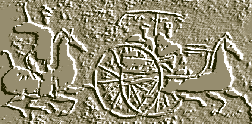The image above is a sketch based on an early stone-rubbing showing one
of the ten Chinese suns crossing the heavens.
The Ten Chinese Suns
Antique inscriptional documents tell us how during the time of the Chou dynasty
(c. 1027-221 B.C.), Chinese people believed that there existed ten suns that
appeared in turn in the sky during the Chinese ten-day week. Each day the ten
suns would travel with their mother, the goddess Xi He in a chariot drawn by 6
horse-dragons, to the Valley of the Light in the East. There, Xi He would wash her children in the lake and put them in the branches of an enormous mulberry tree called fu-sang.
From the tree, only one sun would move off into the sky for a
journey of one day, to reach the mount Yen-Tzu in the Far West. Tired of this routine, the ten suns decided to appear all together. The combined heat of the ten suns made life on the Earth
unbearable. The rocks were melting and the plants withering. To prevent the
destruction of the Earth, the emperor Yao, who was ruling in that period, asked
Di Jun, the father of the ten suns to persuade his children to appear one at a
time.
But the suns did not listen to their father. Finally, Di
Jun sent from heaven the archer, Yi, armed with a magic bow and ten arrows to
frighten the disobedient suns. However, Yi shot nine suns, letting the
three-legged crows hidden in the suns fall to the earth with their breasts
perforated by the Yi's arrows.
Only the Sun that we see today remained in the sky, because the emperor wisely sent one of his courtiers to steal an arrow from the archer's quiver. Di Jun was so angry for the death of nine of his children that he condemned Yi to live as an ordinary mortal in the earth.
You might also be interested in:
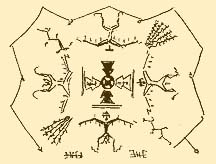
Ahsonnutli was the sky father and chief deity of the Navajo Indians. He created heaven, Earth, and the sky. Each of the four cardinal directions was supported by a giant. Each direction was also associated
...more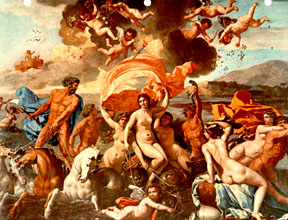
Amphitrite was one of the fifty Nereids, the attendants of the sea-god Poseidon. Poseidon (Neptune) had fallen in love with Amphitrite after seeing her dancing on the island of Naxos. Amphitrite rejected
...more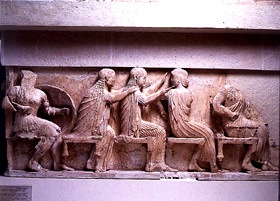
Aphrodite was the Greek goddess of love and beauty. She was known to the Romans as Venus. There were actually two different Aphrodites, one was the daughter of Uranus, the other the daughter of Zeus and
...more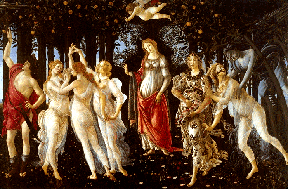
In Greek mythology, Apollo was the son of Jupiter(in Greek Zeus) and Leto (Letona). He was the god of the Sun, logic, and reason, and was also a fine musician and healer. Leto travelled all over Greece
...more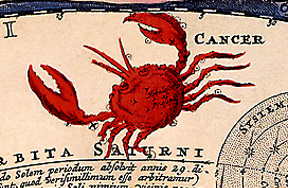
According to an ancient Greek legend, the figure of a gigantic crab was placed in the nighttime sky by the goddess Hera to form the constellation Cancer. Hera was the jealous wife of the sky god, Zeus.
...more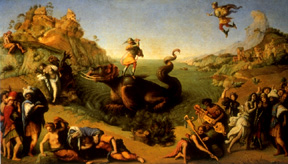
In the Northern Hemisphere sky is the constellation Cepheus, king of Ethiopia, and that of his wife Cassiopeia. Cassiopeia claimed that she and her daughter Andromeda were more beautiful than the sea nymphs,
...more
According tho the Navajo mythology, the Milky Way was created by the misbehavior of the mischievous deity, Coyote. When the world was created, the Holy People gathered around Black God to place the stars
...more
